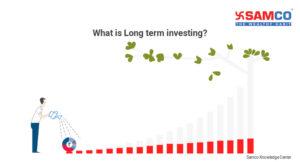Introduction
In an age dominated by instant gratification, long-term investing remains one of the most powerful yet underrated approaches to wealth creation. It involves committing funds to investment avenues for several years—sometimes decades—with the goal of steady growth rather than quick profits. Unlike short-term trading, which focuses on market timing and rapid gains, long-term investing emphasizes patience, discipline, and the power of compounding.
Whether your goal is to retire comfortably, buy a house, or build a legacy, understanding what is long-term investing can help you create sustainable wealth while reducing stress caused by short-term market fluctuations. This article explains the concept of long-term investing, its benefits, the best investment options available, and key strategies to succeed over time.
What Is Long-Term Investing?
Long-term investing refers to buying and holding financial assets over an extended period—typically five years or more—to benefit from growth in value, income, and compounding returns. Instead of reacting to daily market noise, long-term investors focus on the intrinsic strength and future potential of their investments.
Common instruments used for long-term investing include equities (stocks), mutual funds, index funds, bonds, real estate, gold, and retirement schemes like the PPF (Public Provident Fund) or EPF (Employees’ Provident Fund).
The central philosophy of long-term investing is simple: time in the market beats timing the market. By staying invested across economic cycles, investors can smooth out short-term volatility and benefit from the overall upward trajectory of asset prices. For instance, the Nifty 50 index in India has historically delivered ~11–12% CAGR over 20 years, despite multiple short-term corrections along the way.
Importance of Long-Term Investing
The significance of long-term investing lies in its ability to transform small, consistent contributions into substantial wealth. Let’s explore why this approach is critical for all investors:
- Power of Compounding:
Compounding is the process of earning returns on both your initial investment and the accumulated gains over time. Even modest annual returns can grow exponentially when reinvested over decades. For example, ₹1 lakh invested at 12% annual return grows to over ₹9.6 lakh in 20 years — without any additional investment. - Tax Efficiency and Lower Costs:
Long-term investors often enjoy lower capital gains tax rates and reduced transaction costs since they trade less frequently. This not only preserves returns but also simplifies portfolio management. - Goal-Based Financial Planning:
Long-term investing aligns perfectly with life goals such as funding higher education, buying property, or building a retirement corpus. Because the time horizon is longer, investors can afford to take calculated risks for potentially higher returns. - Psychological Stability:
Frequent trading exposes investors to constant market swings and emotional stress. Long-term investing encourages a calm, goal-oriented mindset, helping investors stay focused despite short-term volatility.
In essence, long-term investing is less about predicting markets and more about allowing time to work in your favor.
Best Investment Options for Long-Term Investing
When choosing the best investment options for long-term, diversification across asset classes is key. Each category serves a different purpose in balancing risk and return.
Equity Mutual Funds
These funds pool money from multiple investors to buy diversified stocks managed by professionals. Equity mutual funds are ideal for long-term investors seeking growth with moderate risk.
- Pros: Diversification, professional management, high return potential.
- Cons: Market-linked risk and expense ratio.
- Best For: Investors with a 5+ year horizon who prefer a managed approach via SIPs (Systematic Investment Plans).
Index Funds and ETFs
Index funds and exchange-traded funds (ETFs) replicate benchmark indices like Nifty 50 or Sensex.
- Pros: Low cost, passive management, consistent performance in line with the market.
- Cons: Limited flexibility to outperform indices.
- Best For: Cost-conscious investors seeking market-average returns with minimal effort.
Stocks (Direct Equity)
Investing directly in stocks allows investors to participate in company growth and wealth creation.
- Pros: Highest potential returns and ownership in businesses.
- Cons: Requires research, carries high volatility risk.
- Best For: Knowledgeable investors willing to hold quality companies through market cycles.
Bonds (Debt Instruments)
Government or corporate bonds offer fixed interest income and principal protection.
- Pros: Stability, predictable income, diversification benefit.
- Cons: Lower returns than equities, interest rate risk.
- Best For: Conservative investors or those nearing financial goals.
Real Estate
Property investment can provide capital appreciation and rental income over time.
- Pros: Tangible asset, hedge against inflation, steady cash flow potential.
- Cons: Illiquidity, high entry cost, and maintenance burden.
- Best For: Investors seeking asset diversification and long-term capital growth.
PPF and EPF
Government-backed schemes like the Public Provident Fund (PPF) and Employees’ Provident Fund (EPF) offer safe, tax-efficient long-term returns.
- Pros: Tax-free interest, sovereign guarantee, fixed returns (typically 7–8%).
- Cons: Limited liquidity and long lock-in period.
- Best For: Risk-averse investors building retirement savings.
Gold
Gold, whether in physical form or through Sovereign Gold Bonds (SGBs) and Gold ETFs, acts as a hedge against inflation and currency fluctuations.
- Pros: Safe-haven asset, diversification benefit, inflation protection.
- Cons: No regular income, volatile in short term.
- Best For: Portfolio diversification and wealth preservation.
Strategies for Successful Long-Term Investing
Success in long-term investing is not about picking the hottest stock—it’s about following sound principles consistently.
- Diversification:
Spread investments across asset classes (equity, debt, real estate, gold) to reduce concentration risk. Different assets perform well at different times, balancing overall returns. - Regular Contributions (SIPs):
Systematic Investment Plans allow investors to invest small amounts regularly, reducing the impact of market volatility through rupee-cost averaging. - Rebalancing:
Review your portfolio periodically—at least once a year—to maintain your desired risk-reward mix. For example, if equities outperform, rebalance by shifting some profits into bonds to preserve gains. - Patience and Discipline:
Avoid panic during downturns. Historically, markets recover from corrections, rewarding those who stay invested. Warren Buffett’s advice sums it up best: “The stock market is a device for transferring money from the impatient to the patient.”
Common Mistakes to Avoid in Long-Term Investing
Even with the right intentions, many investors fall prey to avoidable errors.
- Market Timing:
Trying to predict highs and lows rarely works. Consistent investing beats occasional, emotion-driven decisions. - Lack of Research:
Investing in products without understanding risk, tenure, or suitability can derail goals. Always know what you’re buying and why. - Emotional Decisions:
Reacting to short-term market noise can lead to unnecessary losses. Stay focused on your long-term objectives rather than daily headlines. - Ignoring Inflation:
Not accounting for inflation can erode real returns. For instance, a 6% return on a fixed deposit loses value if inflation runs at 7%. Hence, include growth-oriented assets like equities in your long-term plan.
Conclusion
Long-term investing isn’t about quick wins — it’s about consistent, disciplined participation in the growth of the economy and the power of compounding over time. By staying invested, diversifying wisely, and maintaining emotional discipline, investors can achieve their financial goals with far less stress.
Whether you choose equities, mutual funds, bonds, or real estate, the key is to start early, stay consistent, and let time do the heavy lifting. The earlier you begin your long-term investment journey, the greater your potential to build sustainable wealth and financial freedom.





 Easy & quick
Easy & quick
Leave A Comment?